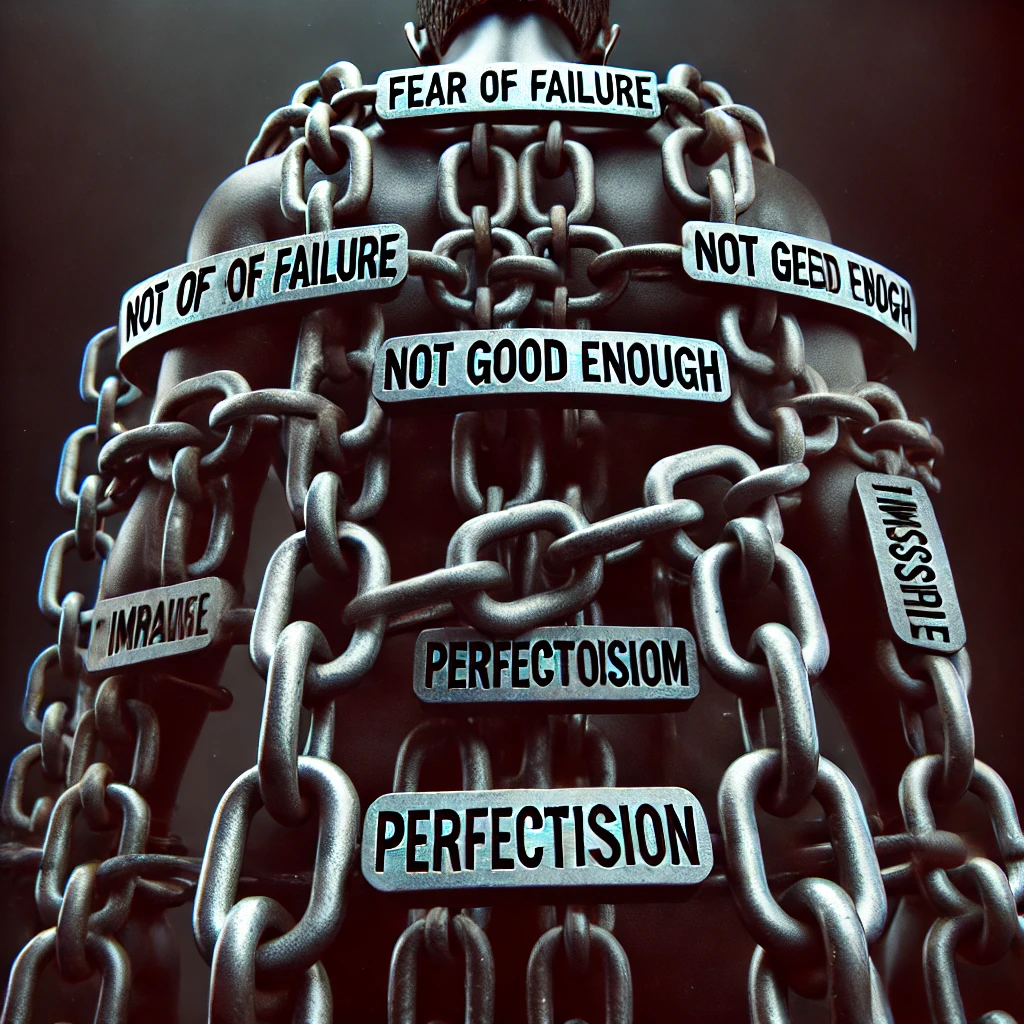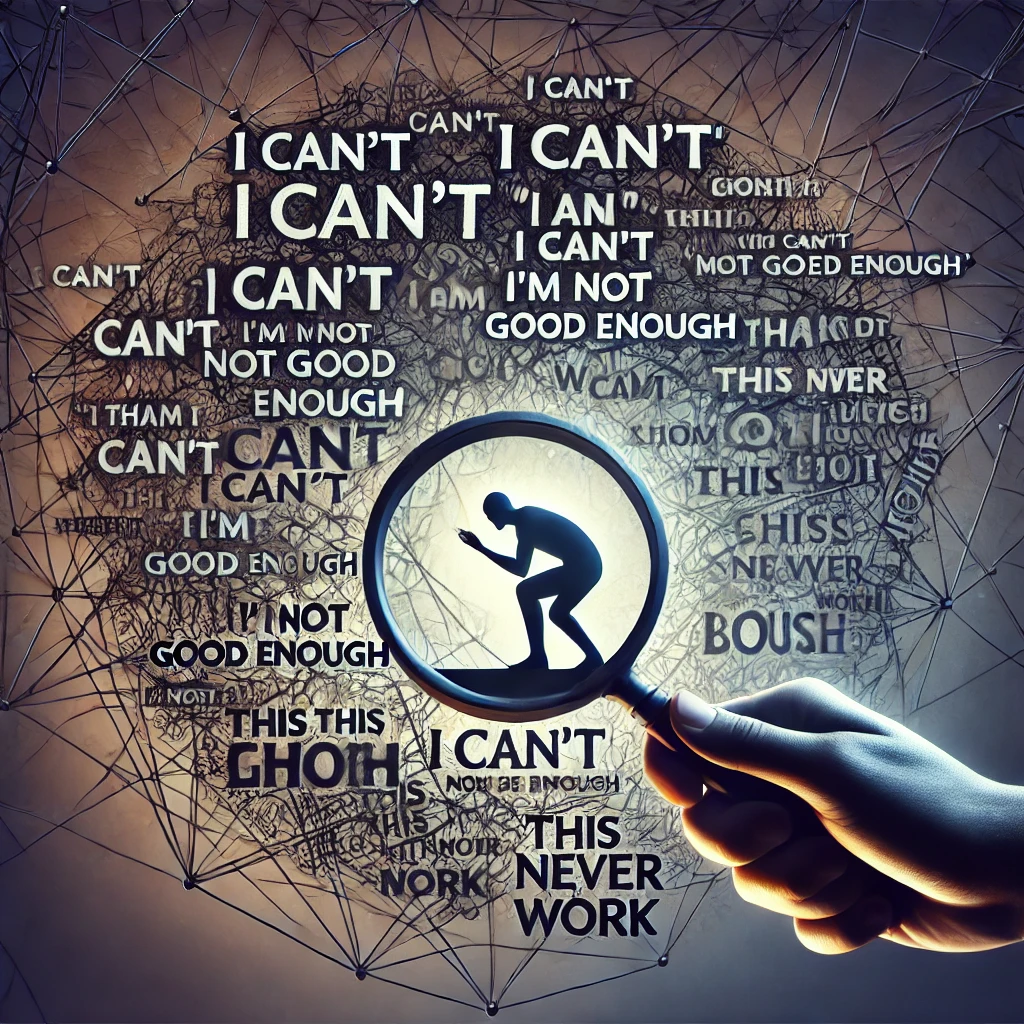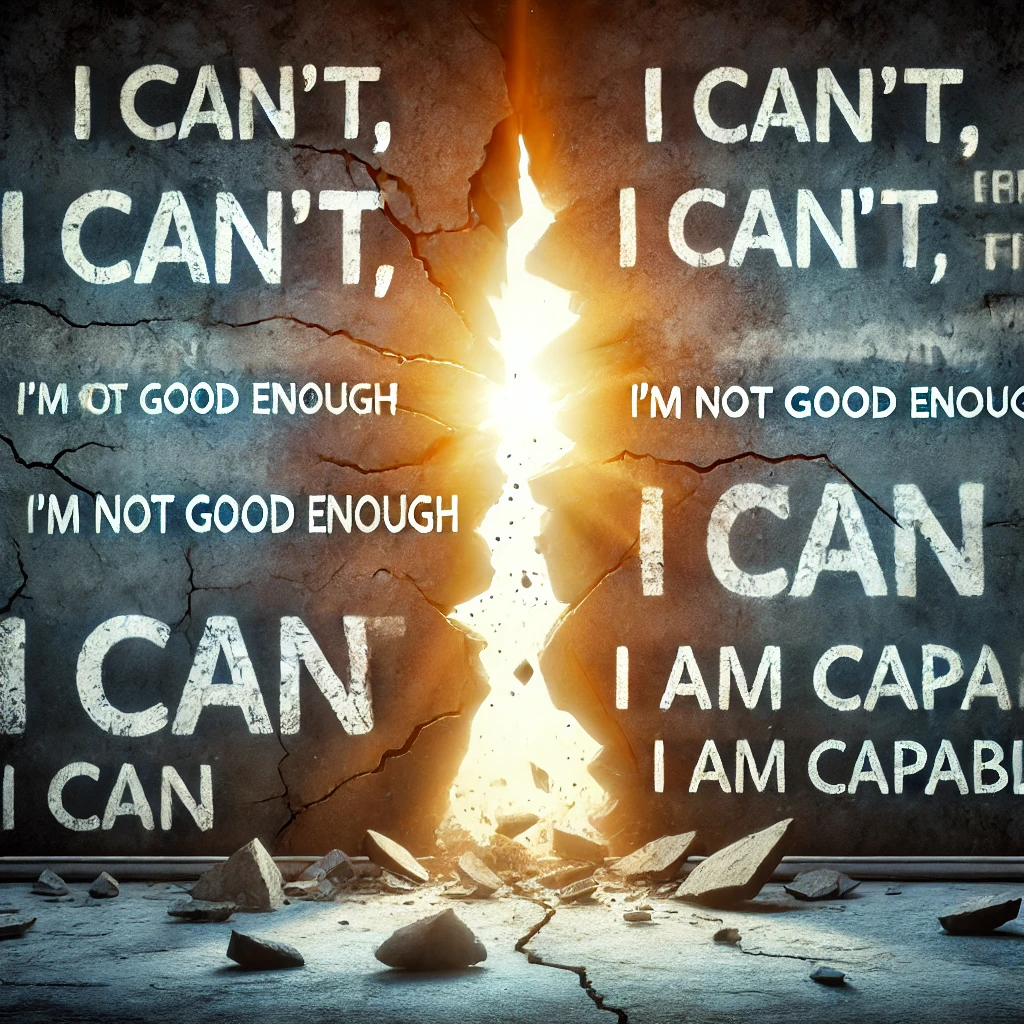Limiting beliefs are the invisible chains that hold us back from reaching our full potential. These deeply rooted thoughts and assumptions shape how we view ourselves, our abilities, and the world around us.
Often, they go unnoticed, subtly influencing our decisions, actions, and ultimately, our success. Whether it’s the belief that you’re not smart enough, that success is meant for others, or that you don’t deserve happiness, limiting beliefs can create powerful mental barriers that prevent you from achieving your goals.
Overcoming these beliefs is not just about positive thinking—it’s about recognizing and challenging those harmful ideas that have been holding you back. In this article, we’ll explore how to identify your own limiting beliefs, how to challenge and reframe them, and how to replace them with postivie and successful thoughts that pave the way for personal growth and success.
By breaking free from these mental barriers, you can unlock your true potential and live a life that’s aligned with your aspirations.

1. What Are Limiting Beliefs? Understanding the Concept
Limiting beliefs are self-imposed constraints that we place on our abilities and potential. These beliefs are often deeply ingrained in our psyche, shaping the way we perceive the world and ourselves. They can stem from various sources, such as childhood experiences, or past failures. Over time, these beliefs solidify and become mental barriers that dictate our behavior, decisions, and overall approach to life.
At their core, limiting beliefs are assumptions or perceptions that we believe to be true, even if they are not based on fact. They might sound like, “I’m not good enough,” “I’ll never be successful,” or “I’m not meant to be happy.” These thoughts are often automatic and go unnoticed, yet they exert a powerful influence over our actions. For instance, if you believe you’re not capable of achieving a certain goal, you may not even attempt to pursue it, thereby limiting your opportunities and growth.
The impact of limiting beliefs can be profound. They can lead to self-sabotage, where you unconsciously undermine your efforts to succeed. They can also foster a negative self-image, perpetuating a cycle of low self-esteem and diminished confidence. In the professional realm, limiting beliefs can prevent you from pursuing career advancements, taking on new challenges, or seizing opportunities that could lead to success.
Understanding the concept of limiting beliefs is the first step toward overcoming them. By recognizing that these beliefs are not absolute truths but rather perceptions that can be challenged and changed, you open the door to personal growth and transformation. It’s important to realize that everyone has limiting beliefs, but the key to success lies in identifying them and taking conscious steps to break free from their hold.

2. Common Limiting Beliefs That Hold You Back
Limiting beliefs come in many forms, and while they can vary greatly from person to person, certain themes are common. These beliefs often revolve around self-esteem, capabilities, and the potential for success. Recognizing these common limiting beliefs is crucial because they can subtly shape your behavior and decisions without you even realizing it – for better or worse.
One of the most harmful limiting beliefs is the fear of failure. Many people are conditioned to believe that failure is something to be avoided at all costs, leading to an aversion to risk-taking. This belief can manifest in thoughts like, “If I try and fail, I’ll be embarrassed,” or “It’s safer to stay in my comfort zone.” As a result, individuals may avoid pursuing opportunities that could lead to significant success simply because they fear the possibility of failing.
Another common limiting belief is the idea of not being “good enough.” This belief often comes from comparisons to others or internalized messages from childhood. It can sound like, “I’m not talented enough to succeed,” or “Others are more deserving than I am.” This mindset can lead to self-sabotage, where you unconsciously undermine your efforts because you don’t believe you deserve success.
A related belief is the notion that success is reserved for others, not for you. This belief might manifest as, “People like me don’t achieve great things,” or “Success is only for the lucky or privileged.” This perspective can create a self-fulfilling prophecy, where you limit your own potential by not even attempting to reach for your goals because you believe they are out of reach.
Perfectionism is another limiting belief that holds many people back. The belief that “everything must be perfect” before taking action can lead to procrastination and missed opportunities. Perfectionists often get paralyzed when things don’t go as idealized. This can prevent them from making progress, as they keep trying to achieve that level of perfectionism instead of being simple and just making it happen.
Lastly, the belief that change is difficult or impossible can also be a significant barrier. This might sound like, “I’ve always been this way, so I can’t change,” or “It’s too late to make a difference.” This belief can keep you stuck in old patterns and prevent you from taking the steps needed to improve your life.
Understanding these common limiting beliefs is the first step toward overcoming them. By identifying these thoughts (and many others) in yourself, you can begin to challenge and change them, opening the door to greater possibilities.

3. How to Identify Your Own Limiting Beliefs
Identifying your own limiting beliefs is a critical step toward overcoming them. These beliefs often operate below the surface, influencing your decisions and actions without you even being aware of them. To break free from their grip, it’s essential to bring them into the light and examine them critically.
The first step in identifying limiting beliefs is self-reflection. Take some time to think about areas in your life where you feel stuck or unfulfilled. Ask yourself why you haven’t achieved certain goals or why you’re avoiding particular challenges. Often, the reasons behind these patterns can reveal underlying beliefs that are holding you back. For example, if you’ve always wanted to start your own business but haven’t, you might discover a belief that “I’m not capable of being a successful entrepreneur.”
Another effective method is to pay attention to your self-talk. The internal dialogue you have with yourself can be very telling. When you’re faced with a new opportunity or challenge, what thoughts immediately come to mind? If you notice phrases like “I can’t,” “I’m not good enough,” or “This will never work,” these are likely signs of limiting beliefs. By becoming aware of these automatic thoughts, you can start to challenge them.
Journaling can also be a powerful tool in uncovering limiting beliefs. Write down your thoughts and feelings about different aspects of your life, especially those where you feel resistance or fear. As you review your entries, look for patterns or recurring themes. These can provide valuable insights into the beliefs that are shaping your perceptions and behaviors.
Seeking feedback from others can also help you identify limiting beliefs. Sometimes, it’s difficult to see these beliefs in ourselves, but others may notice them in our behavior. Ask trusted friends, family members, or mentors if they’ve observed any patterns in your actions or attitudes that might suggest limiting beliefs. Their perspective can help you gain clarity on beliefs you might not have recognized on your own.
Nowadays, you can also use AI (artificial intelligence) to have an eye-opening conversation and feedback about yourself and the way you’re dealing with specific situations. Give it a try and you will be very surprised on how helpful it can be. Just don’t rely on it 100%. Remember, it’s just a tool, not the definite solution for all your problems.
Finally, it’s important to be patient and compassionate with yourself during this process. Identifying limiting beliefs can be challenging, as they are often deeply rooted and tied to our sense of identity. However, by approaching this work with curiosity and a willingness to change, you can start to uncover the beliefs that have been holding you back and begin the journey toward a more successful mentality.

4. Challenging and Reframing Limiting Beliefs
Once you’ve identified your limiting beliefs, the next crucial step is to challenge and reframe them. This process involves questioning the validity of these beliefs and replacing them with more postivie and successful thoughts. It’s about transforming the way you perceive yourself and your potential, allowing you to break free from the mental constraints that have been holding you back.
The first step in challenging a limiting belief is to ask yourself whether the belief is based on facts or assumptions. For instance, if you believe, “I’m not good enough to succeed,” ask yourself, “What evidence do I have that supports this belief?” Often, you’ll find that these beliefs are not grounded in reality but are instead based on past experiences, fears, or prejudices. By questioning the truth of these beliefs, you start to weaken their power over you.
Another effective strategy is to look for counterexamples. Think of times when you have succeeded, even in small ways, despite your limiting beliefs. For example, if you believe, “I always fail when I try something new,” recall a situation where you tried something for the first time and succeeded. These counterexamples serve as evidence that your limiting belief is not universally true and that you are capable of more than you think.
Reframing is the process of turning a limiting belief into positive and successful one. Start by rewording the negative belief into a positive statement. For example, instead of thinking, “I’m not smart enough to do this,” reframe it to, “I am capable of learning and improving.” This shift in language helps to change your focus from what you lack to what you can achieve. Over time, consistently practicing this reframing technique can help rewire your brain to adopt a more successful and positive mentality.
Visualization can also play a powerful role in reframing beliefs. Visualize yourself successfully overcoming the challenge associated with your limiting belief. For example, if your belief is that you’re not good at public speaking, imagine yourself giving a confident and engaging presentation. The more vividly you can picture this scenario, the more you’ll begin to believe in your ability to make it a reality.
Finally, it’s important to practice patience during this process. Changing deeply rooted beliefs takes time and effort. Be patient with yourself and recognize that setbacks are a normal part of growth. Celebrate your progress, no matter how small, and continue to challenge and reframe your beliefs as you move forward.
Challenging and reframing limiting beliefs is a powerful way to transform your mentality. By replacing negative thoughts with positive, successful ones, you create a mental environment that supports your growth and success.

5. Building New, Successful Beliefs for Lasting Change
Challenging and reframing your limiting beliefs is a crucial step, but the journey doesn’t end there. To create lasting change, it’s essential to build new, successful beliefs that support your growth and success. These new beliefs will serve as the foundation for a mentality that allows you to achieve your goals and live a fulfilling life.
The first step in building successful beliefs is to consciously choose the thoughts you want to adopt. Think about the qualities and attitudes that would best support your success. For example, if you’ve struggled with self-doubt, you might choose to adopt the belief, “I am confident and capable of achieving my goals.” Write down these new beliefs and keep them somewhere visible, such as on your mirror or in your journal, as a daily reminder.
Affirmations are a powerful tool for reinforcing new beliefs. Affirmations are positive statements that you repeat to yourself regularly to help reprogram your mind. For example, if you want to build the belief that you’re deserving of success, you might say, “I deserve to be successful and achieve my dreams.” The key to effective affirmations is to phrase them in the present tense, as if the belief is already true. Repeating these affirmations daily helps to embed them into your subconscious mind.
As mentioned before, visualization is another technique that can help solidify your new beliefs. Spend a few minutes each day visualizing yourself living according to your new beliefs. For instance, if you’re working on developing a belief in your ability to succeed, imagine yourself confidently handling challenges, achieving your goals, and enjoying the rewards of your efforts. The more vividly you can picture these scenarios, the more real they will begin to feel.
Taking action is also crucial in reinforcing new beliefs. When you act in alignment with your new beliefs, you create evidence that supports them. For example, if you’re working on the belief that you’re capable of learning new skills, challenge yourself to take on a new project or enroll in a course. As you experience success in these endeavors, your belief in your abilities will grow stronger.
Lastly, be patient and persistent. Building new beliefs takes time, especially if they are replacing deeply rooted limiting beliefs. It’s normal to experience setbacks or moments of doubt along the way. However, by consistently practicing affirmations, visualization, and taking aligned actions, you will gradually shift your mentality and solidify these successful beliefs.
By building new, postive and successful beliefs, you create a mental framework that supports your growth and success. These beliefs will help you navigate challenges with confidence, seize opportunities with enthusiasm, and ultimately live a life that reflects your true potential.
Conclusion
Limiting beliefs are powerful mental barriers that can hold you back from achieving your true potential. These beliefs often operate unnoticed, subtly influencing your decisions and actions in ways that prevent you from pursuing your goals. However, by understanding, identifying, and challenging these beliefs, you can begin to dismantle the constraints and harms they impose.
The journey doesn’t end with overcoming limiting beliefs; it continues with the creation of new, positive and successful beliefs that align with your aspirations. By consciously adopting positive thoughts and reinforcing them through affirmations, visualization, and aligned actions, you can build a mentality that supports your growth and success.
Remember, transforming your beliefs is not a one-time event but an ongoing process. Be patient with yourself, celebrate your progress, and continue to nurture the positive and successful beliefs that will guide you toward the life you desire. As you do, you’ll find that the limitations that once seemed unchangeable begin to fade, replaced by a renewed sense of possibility and potential.
Your mind is a powerful tool—use it to create the life you’ve always dreamed of.
More information on my YouTube channel Mario Messias Official.
You can also be interested in books about mentality on Amazon.
